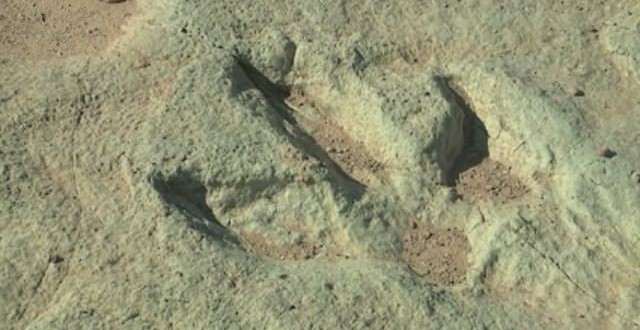The public will soon have a chance to see an extraordinary set of footprints left behind by dinosaurs 125 million years ago.
The tracks were first discovered by a Moab resident in 2009 but the location of the discovery-site has been kept secret. Scientists from the University of Colorado and the Bureau of Land Management studied the site north of Moab and excavations began last year.
“It’s tracks of the past, really, and it’s very cool to be trying to preserve that information,” science writer and volunteer Allyson Mathis said.
Volunteers are sweeping, scraping and brushing the stuff that’s hidden the tracks from view for eons.
“Over 200 tracks that we’re aware of so far that we’ve uncovered,” volunteer Lee Shenton said. “And at least one case where there’s 17 consecutive prints from the same animal.
“I think it’s going to be something really important. It has at least a dozen different animals.”
For some of those species, scientists have never found a single bone they left behind.
“About 125 million years ago in the cretaceous,” BLM paleontologist Rebecca Hunt-Foster said. “So it helps kind of fill in these gaps about these animals that we don’t know much about, that we know were here, but we just don’t find their bones.”
An ancient crocodile dragging its tail apparently left a slash in the hardened mud.
A three-toed meat eater walked there too, similar to the familiar and frightening Utahraptor.
“That’s the claw that had the big scary claw on it, like in ‘Jurassic Park,’ ” Hunt-Foster said.
What Mathis finds fascinating about track sites is they “record behavior of dinosaurs in ways that the bones or body fossils cannot.”
The volunteers are cleaning the exceptionally well-preserved tracks so the BLM can document them with 3-D photography.
“And then we’ll be able to replicate any of the tracks, should they ever be damaged or destroyed,” Hunt-Foster said. “And also people will be able to study them without doing damage to the actual surface.”
It’s a quirk of nature: footprints left in mud that hardened into rock, now giving humans a chance to connect with our ancient predecessors.
“It’s pretty awesome to know that an animal walked right underneath where you’re working and that these creatures were once living, breathing creatures that were all over the place,” Hunt-Foster said.
The BLM is raising funds to build a trail to the dinosaur tracks. The agency hopes to have the site open to the public by October.
Agencies/Canadajournal

 Canada Journal – News of the World Articles and videos to bring you the biggest Canadian news stories from across the country every day
Canada Journal – News of the World Articles and videos to bring you the biggest Canadian news stories from across the country every day

